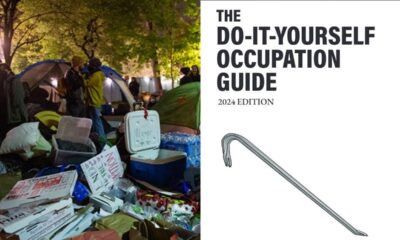Business
Amid homeowner insurance crisis, consumer advocates and industry clash at hearing
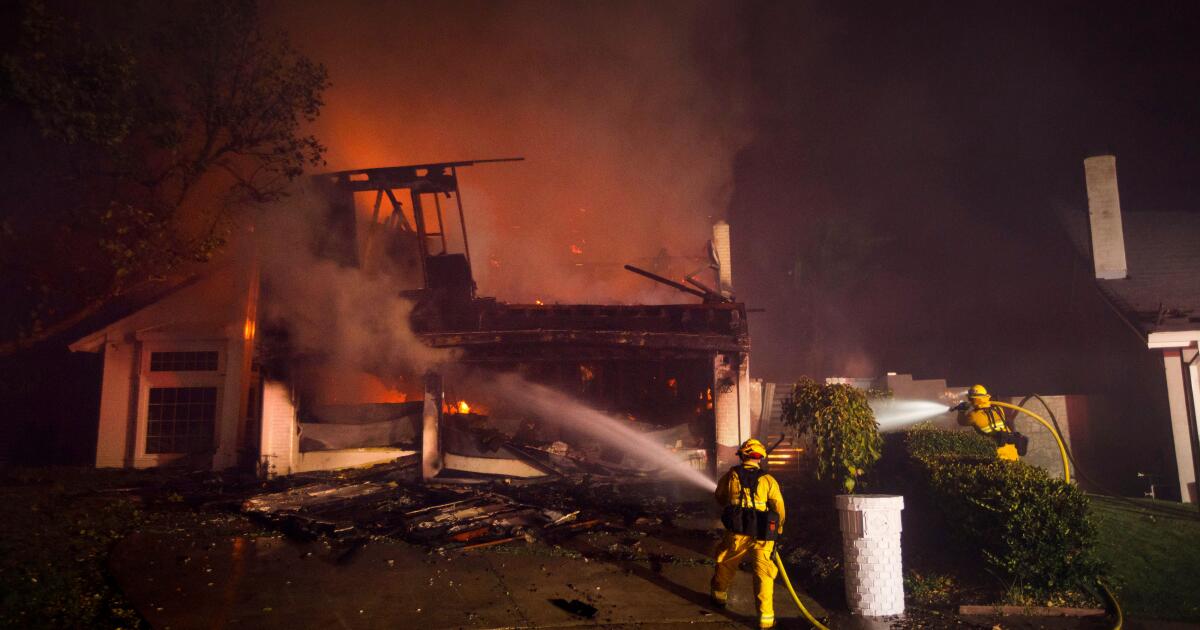
The fault lines running through California’s spiraling homeowners insurance crisis were on display Tuesday at a state hearing, where consumer advocates clashed with industry firms over a plan to allow insurers to use complex computer models to set premiums — a move state officials say will attract insurers to the market.
State Insurance Commissioner Ricardo Lara has proposed allowing insurers to employ so-called catastrophe modeling, which uses algorithms that predict the future risk properties face from wildfires, when setting the price of policies. Currently, rates are based on an insurance company’s past losses, which insurers increasingly dismiss as insufficient in light of the widespread acceptance that climate change has thrust California into a more dangerous future by causing more wildfires.
The models, which are in use in other states, are a key element of Lara’s strategy to moderate price increases by allowing more accurate calculation of risks while persuading insurers to do business in neighborhoods prone to wildfires. The move comes amid a recent stream of insurers exiting the California market with announcements they are not renewing policies or have stopped writing new ones.
Consumer groups worried at the hearing that the draft regulations would not allow enough scrutiny of the models, while several consulting firms that have developed them expressed concern about protecting their intellectual property.
“The algorithms and artificial intelligence that private ‘black box’ catastrophe models use will simply be tools for insurance company price gouging unless California mandates real transparency into how they impact prices and imposes real rules of the road regarding their design and use,” said Carmen Balber, executive director of Consumer Watchdog, an L.A. advocacy group that led the campaign for passage of Proposition 103, the 1988 measure that requires homeowners and auto insurers to get state approval for rate hikes.
The group, like other consumer advocates who spoke at the hearing, called on Lara to work with the state’s academic and insurance experts to develop a “public model,” in which all the factors that go into the computer simulations are available for everyone to review. Such a model could be used to set rates or benchmark privately developed models.
The draft regulations require those who want to review the models to sign nondisclosure agreements, which Consumer Watchdog has alleged will prevent its staff members from discussing the models among themselves.
Julia Borman, a director at Verisk, a company that builds computer models used by insurers, expressed concern that the draft proposal put forth by Lara would allow for a review by “countless participants and create the opportunity for an infinite timeline,” while not safeguarding companies from having their models ripped off by others
Michael Soller, the state Department of Insurance’s deputy commissioner for communications, said Lara has publicly stated that the draft rules will allow for the development of public catastrophe models, which the department might then use to evaluate the insurers’ proprietary models.
The proposal to allow catastrophe models is part of Lara’s larger Sustainable Insurance Strategy announced last fall. Other elements include righting the finances of the state’s Fair Access to Insurance Requirements plan, an insurer of last resort that has been deluged with new policyholders since insurers started pulling back from the market. He also wants to allow insurers to include in premiums the cost of reinsurance, which they purchase to protect themselves from disasters.
Catastrophe models are already allowed in California for pricing policies that cover earthquakes and fires caused by quakes. Along with wildfires, under the proposed regulations, the use of the models would also be permitted for insurance covering terrorism, floods and some other types of coverage.
Gerald Zimmerman, senior vice president of government and industry relations at Allstate, which stopped selling new homeowners insurance policies in the state in 2022, said that adopting Lara’s strategy would be a game changer. “Allstate will begin writing new homeowner insurance policies in nearly every corner of California,” he said.
Other speakers at the three-hour hearing included insurance agents and local officials, as well as homeowners groups, which want to ensure that catastrophe models take into account steps taken by homeowners and government agencies to reduce fire risks, such as by making homes more fire-resistant and reducing brush in a community. Although the draft regulations call for doing so, several speakers complained that such mitigation efforts had not been reflected in recent premium increases.
The Insurance Department plans to review Tuesday’s remarks in preparing for the release of a new set of proposed regulations. Lara has the support of Gov. Gavin Newsom, who issued a letter calling for the commissioner to move quickly to resolve the crisis. The regulations do not require legislative approval or the governor’s signature.
“We will review all public comments while staying on track to implement all changes this year, so insurance companies start writing more policies in all areas,” Soller said.

Business
IMF chief Kristalina Georgieva calls U.S. debt load 'mind boggling'
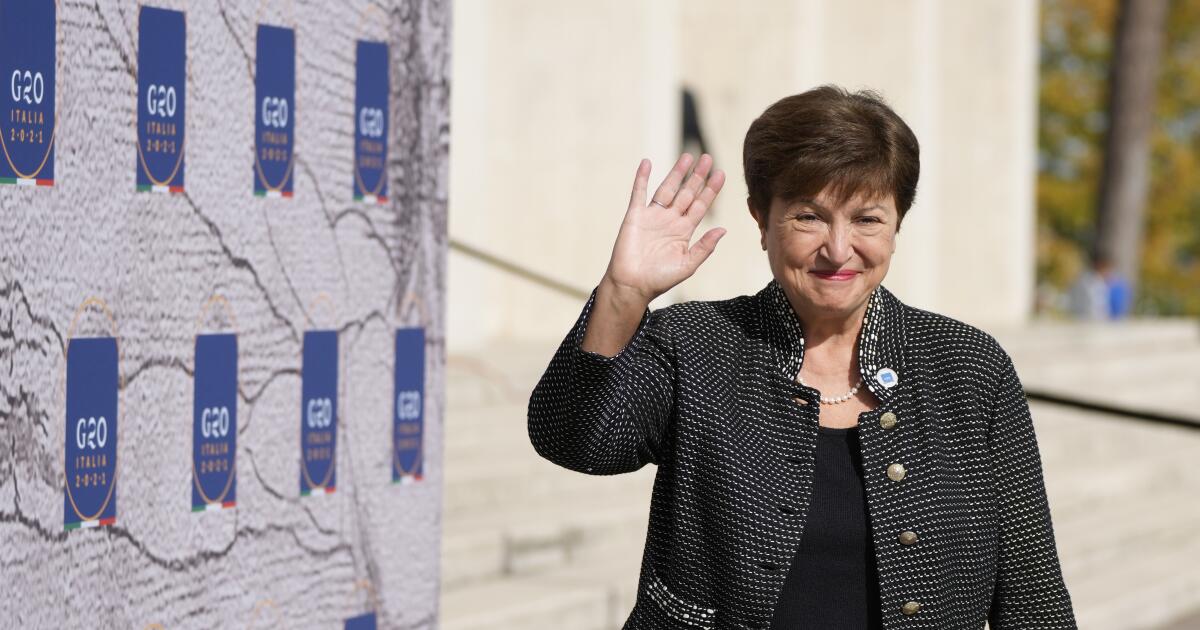
International Monetary Fund Managing Director Kristalina Georgieva praised the strength of the U.S. economy but warned its current level of deficit spending was not sustainable and could crimp U.S. and global growth if it’s not brought under control, in remarks Monday at the Milken Institute Global Conference.
Servicing the U.S debt — now roughly $34 trillion — consumes more than 17% of federal revenue, compared to under 7% in 2015, Georgieva said in an interview that kicked off the annual conference at the Beverly Hilton, which draws thousands of businesspeople, investors and professionals from around the world.
“It cannot go like this forever, because the … burden on the U.S. is going to cripple spending that is necessary to make for servicing the debt. To pay 17-plus percent in debt service is just mind-boggling,” Georgieva said. “There is opportunity cost to this money … it doesn’t go to emerging markets where it can finance jobs and business opportunities for American companies.”
The IMF is composed of 190 member nations and is one of the leading global economic institutions, providing lending to economies in distress.
Georgieva said the U.S. needs to address its entitlement spending but said its economy is strong and remains a pillar of the world economy given its innovation, strong labor market and position as an energy exporter.
She also said she did not believe that the trend toward deglobalization was leading to the disintegration of the global economy, but warned that trade sanctions and industrial policies taken by many nations will only lead to lower growth rates — with the primary question being how much.
“We are measuring that just trade restrictions can cause the world economy to lose between 0.2% and 7% of GDP,” she said, comparing the high-end figure to removing Japan and Germany from the world economy. “So it is really costly.”
However, calling herself an “eternal optimist,” Georgieva said she expected “policymakers to take a course correction when they see that where they are headed is, you know, falling off a cliff.”
She envisioned that this decade will see advanced economies like the U.S. do well, while others will stagnate and lower-income countries continue to fall behind.
“So very likely we will have a world in which some economies transform, some economies stagnate and some parts of the world are in perpetual turbulence,” she said.
Milken Institute President Richard Ditizio introduced the IMF managing director, telling the audience that this year’s 27th annual conference, which ends Wednesday, will feature more than 200 sessions and more than 1,000 speakers.
The theme of this year’s conference is “Shaping a Shared Future,” a reference to finding common ground amid the complex issues that have arisen in the post-pandemic world, including war, the emergence of artificial intelligence and the need to create a sustainable economy amid climate change.
After the IMF managing director’s remarks, Brad Lightcap, chief operating officer of OpenAI, spoke about the San Francisco company’s artificial intelligence products — a technology that Georgieva said the world will need to rely on for growth and productivity gains.
Lightcap said that 92% of Fortune 500 companies are using the company’s ChatGPT enterprise product. He cited Moderna as an example of a business use: the Cambridge, Mass.-based maker of one of the leading COVID-19 vaccines is using the company’s AI for drug development. And the OpenAI chatbot of Swedish mobile-payments company Klarna is replacing the work of 700 customer support agents, he said.
However, Lightcap maintained that artificial intelligence will create job demand in areas that can’t be predicted, and that advancement of the technology is so rapid that in the next 12 months “the systems we use today will be like laughably bad.” He envisioned a not-distant future where “it’ll be foreign to anyone born today that you can’t talk to a computer the way you talk to a friend.”
All public panels are being livestreamed on the institute’s website. Argentina President Javier Milei and Elon Musk are scheduled to speak later in the day.
Business
Jeannie Epper, trailblazing Hollywood stuntwoman, dies at 83
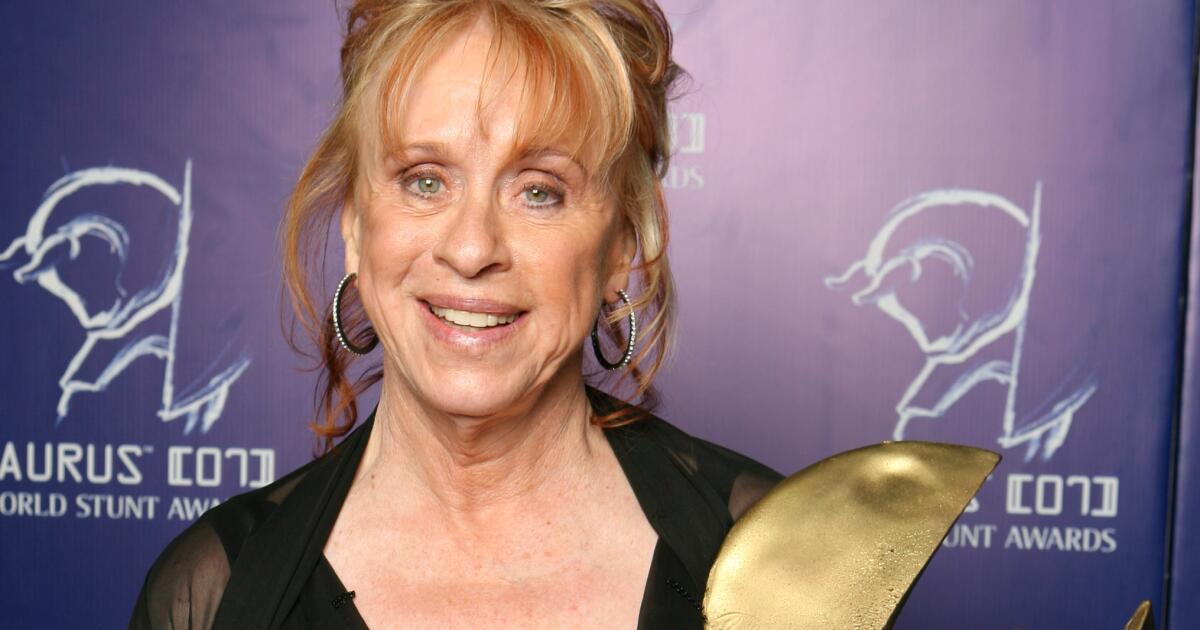
Jeannie Epper, a pioneering stuntwoman who performed in more than 100 films and television series, has died. She was 83.
Epper died Sunday night of natural causes surrounded by family at her home in Simi Valley, a spokesperson confirmed Monday.
In a long career spent bursting through doors, kicking down walls and falling off roofs, Epper changed the course for women in the industry when she became Lynda Carter’s stunt double on the 1970s TV series “Wonder Woman.” It was Epper, standing in for Kathleen Turner, who was swept down a mudslide in “Romancing the Stone” — for which she received a 1985 Stuntman Award for most spectacular stunt in a feature film.
In a blond wig, Epper took the blows for Linda Evans in those iconic catfights with Joan Collins on the nighttime soap “Dynasty.” It’s Epper’s stunt-driving that audiences see when Shirley MacLaine throws Jack Nicholson from her Corvette in the movie “Terms of Endearment.”
Epper’s prolific credits include stunt work in “The Bionic Woman,” “Charlie’s Angels,” “Robocop,” “The Italian Job” and “Kill Bill: Vol. 2.” Epper was profiled alongside fellow stuntwoman Zöe Bell in the 2004 documentary “Double Dare.”
She has been called the “godmother of stuntwomen” and “the grand matron of Hollywood stuntwomen,” working well past retirement age. At age 74, she performed stunts in the 2015 comedy “Hot Pursuit,” starring Sofia Vergara and Reese Witherspoon.
“She certainly qualifies to be one of the greatest stunt coordinators,” said director Steven Spielberg, who worked with Epper on “Catch Me if You Can” and “Minority Report.”
She was born Jean Luann Epper in 1941 to John and Frances Epper, both professional stunt performers. In the 1920s, Epper’s father immigrated to the United States from Switzerland and established a riding academy in Los Angeles where he later became a stuntman for movies, specializing in horseback stunts and doubling for actors including Ronald Reagan and Gary Cooper.
Jeannie Epper grew up in North Hollywood with five brothers and sisters — all of whom worked as stunt people. Her three children and grandchildren also went into the family business.
Epper was a skilled rider, and at age 9, she broke into stunt work, riding a horse bareback down a mountain for a 1950s TV show, becoming one of the first professional child stunt doubles.
“My father said it could be dangerous, but he knew I was an excellent rider,” she told The Times in 1999. “He kept telling me to keep my head up, but that’s about all. I think he didn’t want to over-concern me. There’s a fine line between being concerned and destroying someone’s confidence.”
The series marked the start of Epper’s game-changing career in the male-dominated industry.
Although Epper came from a family of stunt people, it was typical when she began working for men to wear wigs while doing stunts for female actors. But thanks to persistence and shifts in attitudes and fashion, Epper changed the business.
“Actresses began saying, ‘I don’t want a hairy-legged guy doing this for me,’” she told The Times in 1999. “And women were wearing less and less clothes in front of the camera, and it was so obvious it was a man.”
Later, as a stunt coordinator, Epper recalled dealing with men who resented taking orders from a woman.
While working on the 1980s police series “Cagney & Lacey,” she described a guest actor who not only couldn’t throw a convincing punch but also refused to be instructed by a woman, allowing only other stuntmen on set to show him what to do.
“He threw the punch well enough to shoot the scene,” she said. “But he still couldn’t throw it like a man.”
In 2019, on the occasion of being honored at the Artemis Women in Action Film Festival, Melanie Wise — a producer, actor, stuntwoman and founder of the organization — said of Epper, “Jeannie inspired a wave of women to get into stunts. They are in awe of her.”
Epper was a founding member of the Stuntwomen’s Assn. of Motion Pictures and an honorary member of the Stuntmen’s Assn. of Motion Pictures.
She is survived by husband Tim Kimack, daughter Eurlyne Epper, son Richard Epper, five grandchildren and seven great-grandchildren. She was preceded in death by son Kurtis Epper, who was also a stunt performer.
Times staff writer Nardine Saad contributed to this report.
Business
Eight arrested in multimillion-dollar retail theft operation, Los Angeles County sheriff officials say

Eight people were arrested on suspicion of organized retail theft after authorities discovered several million dollars’ worth of stolen medicines, cosmetics and other merchandise at multiple Los Angeles locations, sheriff officials said.
The retail goods were stolen by crews of organized shoplifters at stores in California, Arizona and Nevada, according to detectives. The stolen items were then taken to various locations in L.A. County where they were sold to various “fence” operations, officials said.
Authorities investigating retail theft refer to people who buy stolen goods and then resell them for a profit as “fences.”
The Sheriff’s Department said they had also recovered a stolen firearm and a large sum of cash, according to a release sent late Friday.
The suspects, who were not named, are being held on $60,000 bail each.
Early Thursday morning, sheriff‘s detectives performed raids at a dozen locations in Los Angeles thought to be involved in the crime ring, according to KCAL CBS.
At a small South L.A. market, they found boxes of stolen Motrin, Theraflu and other goods stacked floor to ceiling, the report said. Store tags were still affixed to much of the merchandise. The location appeared to be where the goods were relabeled for sale, officials said.
Detectives said they worked with the help of stores, including CVS and Walmart, to track the illegal operation.
The stolen merchandise is often sold online, officials said, including on Amazon.
The investigation is ongoing. Anyone with information should contact the Organized Retail Crimes Task Force at (562) 946-7270.
-

 News1 week ago
News1 week agoBoth sides prepare as Florida's six-week abortion ban is set to take effect Wednesday
-

 Politics1 week ago
Politics1 week agoColumbia University’s policy-making senate votes for resolution calling to investigate school’s leadership
-

 Politics1 week ago
Politics1 week agoGOP Rep. Bill Posey won't seek re-election, endorses former Florida Senate President as replacement
-

 World1 week ago
World1 week agoRussian forces gained partial control of Donetsk's Ocheretyne town
-

 Politics1 week ago
Politics1 week agoHouse Republicans brace for spring legislative sprint with one less GOP vote
-

 World1 week ago
World1 week agoAt least four dead in US after dozens of tornadoes rip through Oklahoma
-

 Politics1 week ago
Politics1 week agoAnti-Trump DA's no-show at debate leaves challenger facing off against empty podium
-
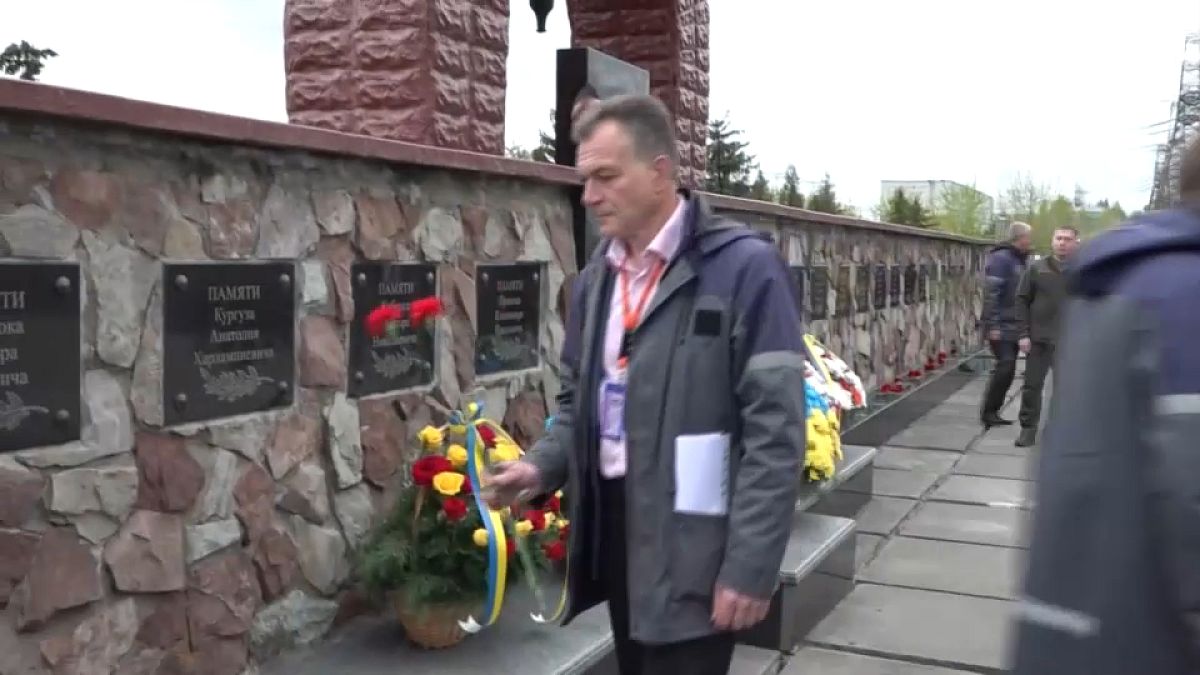
 World1 week ago
World1 week agoZelenskyy warns of Russian nuclear risks on Chernobyl anniversary





